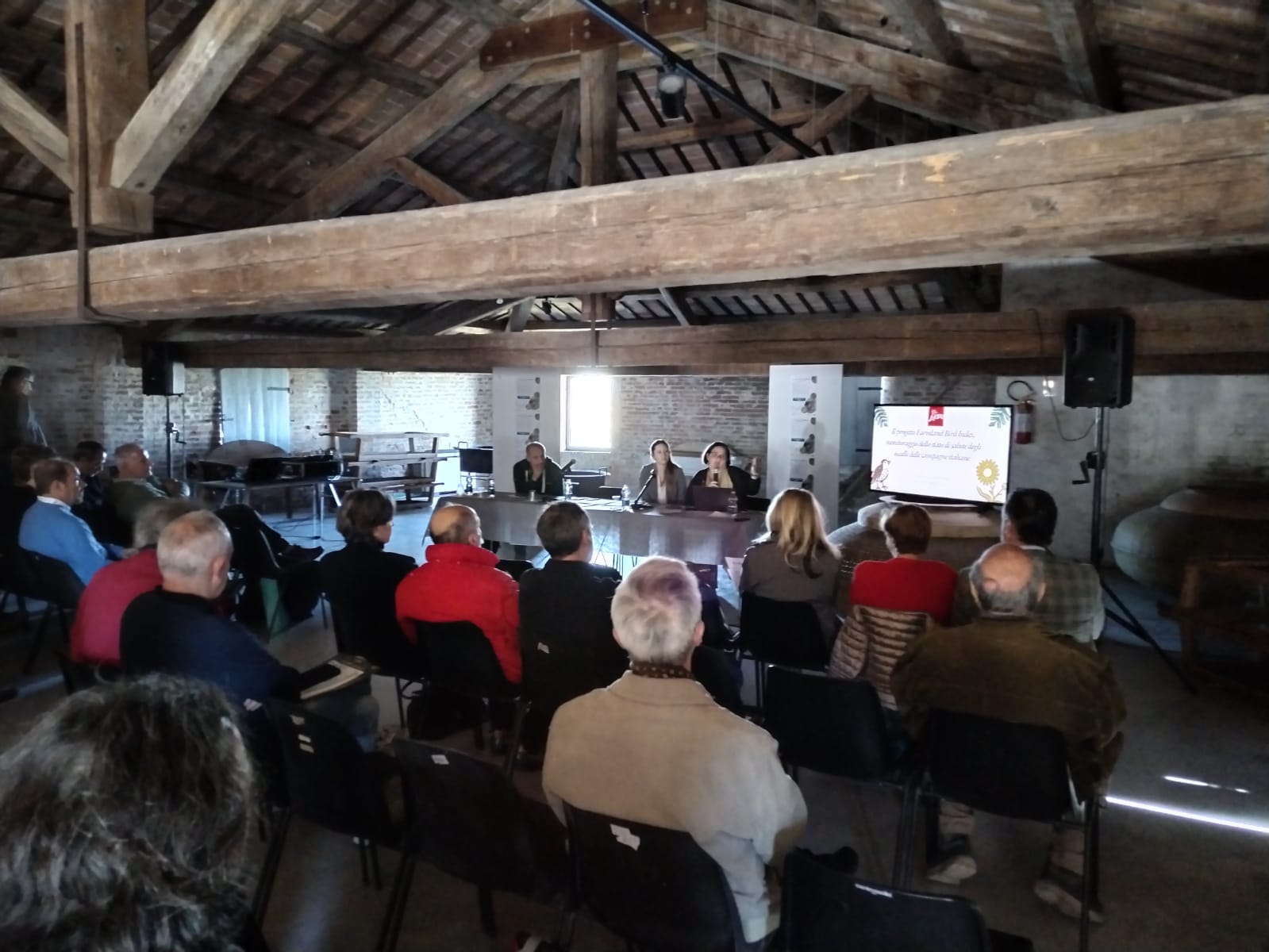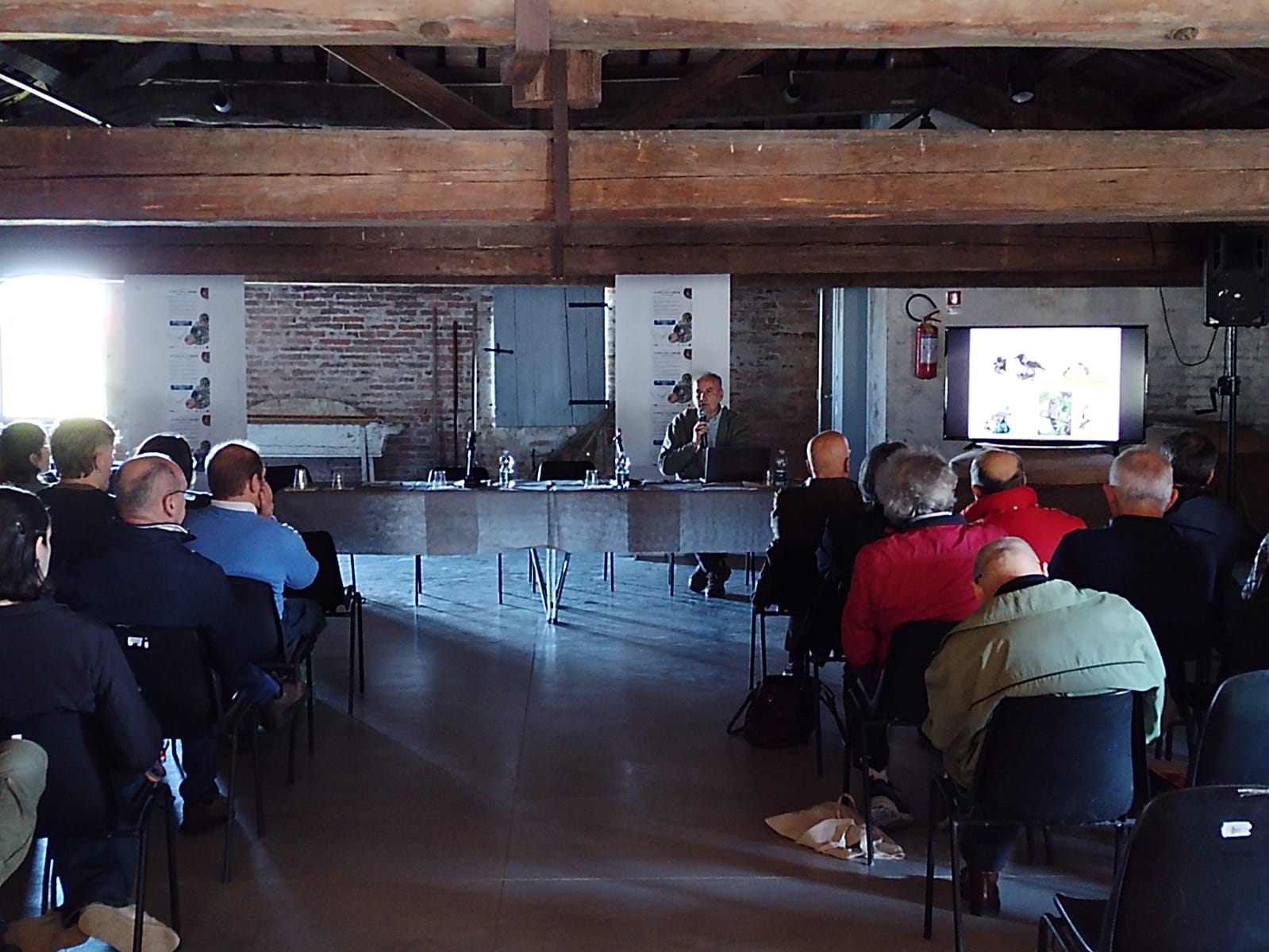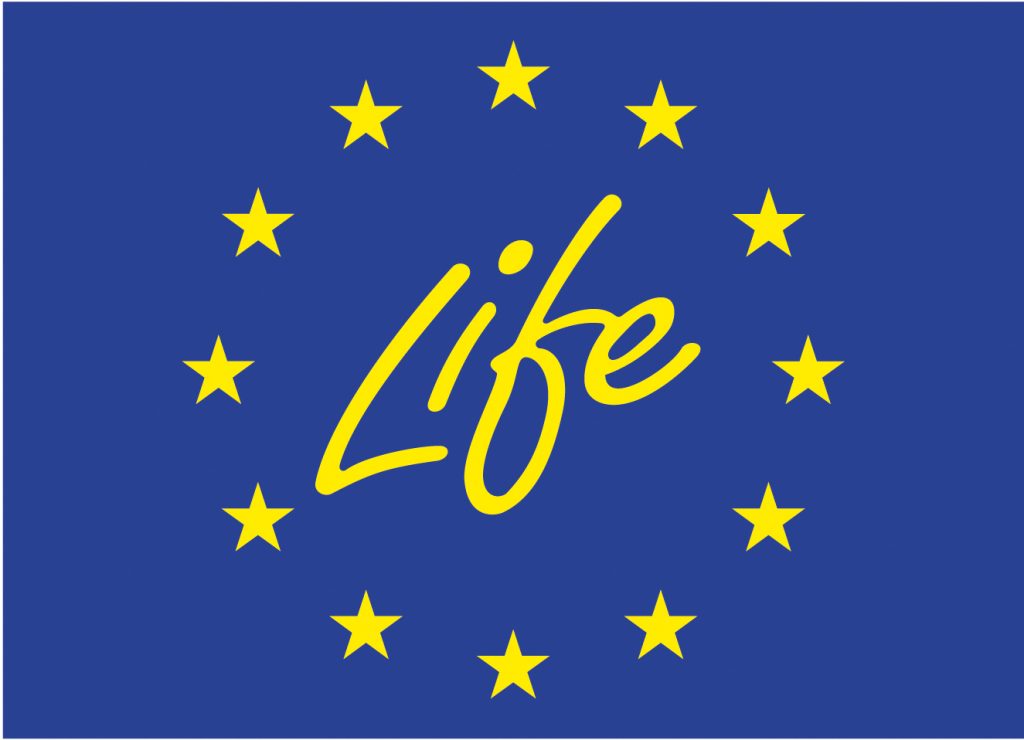THE BIRDS OF THE COUNTRYSIDE
Focus on the state of avifauna in agricultural areas in the seminar organized by the Po Delta Park as part of the LIFE Perdix project
Countryside birds: extraordinary environmental indicators to measure the quality of agricultural ecosystems. An aspect well underlined, in the opening greetings, by the president of the Po Delta Park Aida Morelli, who, presenting the work of the study day, focused on the ongoing and evolving projects and the silent and effective actions resulting from the conservation and protection of biodiversity activities pursued by the Park Authority.
The data presented during the meeting held on Thursday 4 April in Comacchio, at the Sala degli Aceti of the Manifattura dei Marinati, gave the sign of a progressive decrease in the avifauna, certified by the experts through the monitoring of the species. The project conducted by LIPU – Farmland Bird Index concerns a national data collection project of common bird species typical of agricultural breeding areas in Italy and is promoted by the Ministry of Agricultural Policies, Food Sovereignty and Forestry SAF (2009 – 2024). The data from Emilia-Romagna indicate a drastic decline for all the species present in the countryside, with tragic peaks for some species, such as in the cases of skylark and stonechat, which, in fact, have recorded the most important demographic losses (respectively – 86.8% and -94.1%). Passive rates of over 80% have, however, been recorded for many other nesting birds, including wrynecks, warblers, little shrikes and Italian sparrows (for this last species, exclusive to our peninsula, we have an additional responsibility, because if goes extinct in Italy, disappears from the planet). The Report was given by Federica Luoni of national LIPU (Birdlife Italia), who explained that “The declining trends concern species of meadows, agricultural mosaics, linked to the hygrophilous vegetation of the irrigation network, and rural settlements. The fact that species so different from the point of view of autoecology are experiencing the same demographic decline draws attention to the general deterioration of the environmental quality of agricultural environments. The same phenomenon, however, is particularly serious in all the regions that share portions of the Po Valley, in particular Emilia-Romagna, Lombardy and Veneto”.Notes of hope for the protection of the lesser kestrel, a small falcon with a conservation priority at European level, were instead illustrated by Jacopo Cecere of ISPRA. In fact, ISPRA has successfully conducted the LIFE Falkon project, for the protection of this small hawk typical of open environments and countryside, which is expanding its range northwards, having colonized the Po Valley since the early 2000s. populations of this species are concentrated in the Mediterranean area, therefore conservation actions have been carried out aimed at strengthening the populations located on the northern edge of the usual sites, also involving Greece and Spain. For Italy, the interventions were carried out in the areas present in the Provinces of Mantua, Modena and Ferrara, through the installation of artificial nests and the construction of nesting towers, the main limiting factor being locally the availability of places suitable for nesting.


The president of the Ornithologists’ Association of Emilia-Romagna, Roberto Tinarelli, with a species-by-species mapping, focused on the ornithic presences in the Mezzano area (an agricultural area of 18 thousand hectares reclaimed in the 1960s, in a Natura 2000 site managed by the Park Authority). An area that is used by many species of birds of prey for nesting and wintering, where rare species such as the European roller and the red-footed falcon nest (in addition to the aforementioned lesser kestrel) and where wild geese and cranes winter in large numbers, despite the disturbance caused by the owners of agricultural land who mistakenly consider them to be harmful species.
On the same site, the LIFE Perdix Project is still underway, coordinated by ISPRA with many partners including the Park Authority, aimed at the recovery and conservation of the Italian partridge, declared extinct in the wild. The main actions of the project focused on genetic analysis for the reconstruction of the subspecies, on captive breeding and the subsequent reintroduction of viable populations within the Natura 2000 Valle del Mezzano site, in the Po Delta. To illustrate the activities and the results of the project were provided by Massimiliano Costa, director of the Po Delta Park, who underlined how the project made it possible to secure the subspecies during the actions and the reintroduction into nature of almost 25,000 specimens of Italian partridge in just three years. The director also focused on the improper and harmful use of herbicides, providing disturbing data on the impact that these harmful substances have on the environment, citing the numerous scientific articles that document their impact on the ecosystem, flora and fauna; addressing this issue, already introduced in the discussion by the representative of LIPU, could be one of the actions of the Park Authority in the post-LIFE context, through the modification of the Conservation Measures in force in the Natura 2000 network, to allow the use of herbicides only where they are truly indispensable for agricultural practices or by introducing compensated limitations on their use.


